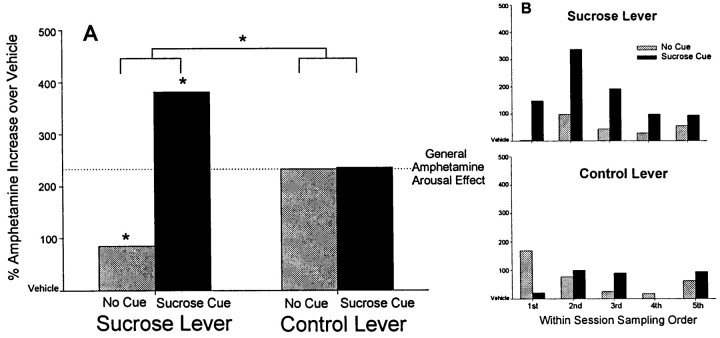Fig. 3.
The percentage increase in lever pressing produced by amphetamine (20 μg, CS+ group) compared with baseline pressing after vehicle microinjection. Amphetamine increased overall pressing on both the sucrose lever and the control lever (A). In the absence of the cue, the percentage increase in pressing was greatest on the control lever. The presence of the CS+ sucrose cue selectively enhanced pressing on the sucrose lever, producing a cue-triggered redirection of potentiation of behavior to obtain sucrose reward. B shows the percentage increase in pressing produced by amphetamine during each successive CS+ cue presentation and its paired no-cue period over the course of the test session. Amphetamine consistently enhanced pressing on the sucrose lever primarily during the CS+ sucrose cue. The pattern of the effect by amphetamine on the control lever shows no relationship to the cue, in contrast, being sometimes greatest during the presence of the cue, sometimes during its absence, and sometimes producing little enhancement at all. Thus, pressing on both levers is sensitive to general arousal produced by amphetamine, but only pressing on the sucrose lever showed a percentage increase after amphetamine microinjection that was dramatically and reliably gated by the CS+ reward cue.

